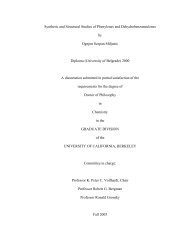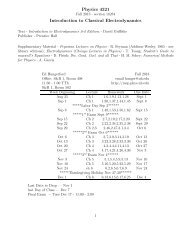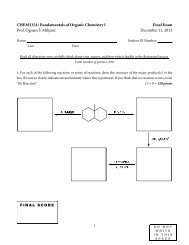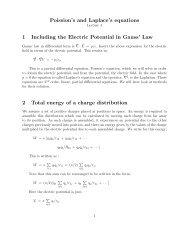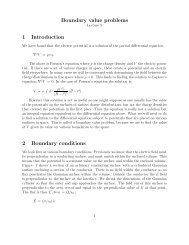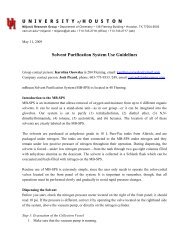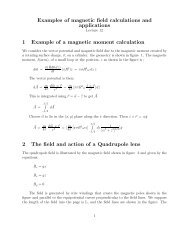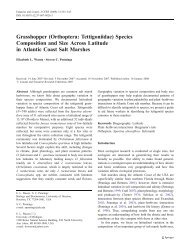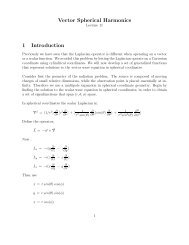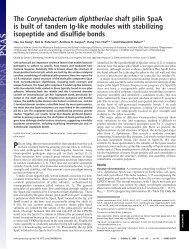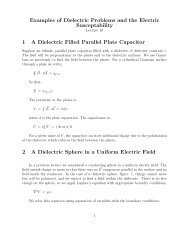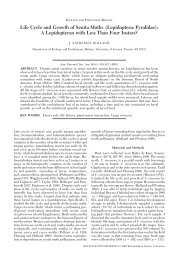Scattering 1 Classical scattering of a charged particle (Rutherford ...
Scattering 1 Classical scattering of a charged particle (Rutherford ...
Scattering 1 Classical scattering of a charged particle (Rutherford ...
You also want an ePaper? Increase the reach of your titles
YUMPU automatically turns print PDFs into web optimized ePapers that Google loves.
Now a properly normalized outgoing Green’s function for a point source can be written ase ikRR(ie the Green function in a previous lecture). Therefore the solution in practical ratherthan in the above formal formal terms can be written ;ψ out = ∫ d⃗r eikRR S(⃗r′ )ψ in + ∫ d⃗r eikRR S(⃗r′ )ψ outThis is not a solution but an integral equation because ψ is not known until the solution isobtained, ie the source term in the intergand is unknown.3 <strong>Scattering</strong> <strong>of</strong> the EM wave<strong>Scattering</strong> generally occurs when the EM wavelength is large compared to the <strong>scattering</strong>source. EM <strong>Scattering</strong> occurs when some <strong>of</strong> the incident wave is absorbed and re-radiated.As in radiation, we keep the lowest terms in the multipole expansion <strong>of</strong> the scattered fields.Almost always this results in dipole radiation as the incident wave polarizes the charges inthe <strong>scattering</strong> center. If the incident wave has large amplitude, then it is possible that thecharges will not move linearly with the incident E field, but will bend due to the ⃗v × ⃗ B force<strong>of</strong> the magnetic component in the incident wave. An intense incident wave would probablyalso require terms <strong>of</strong> higher order than the Born term in the perturbation expansion forthe cross section. The <strong>scattering</strong> formulation occurs as follows (we always assume a timedependence <strong>of</strong> e iωt )A plane, monochromatic, linearly polarized wave is incident on a <strong>scattering</strong> center. Theincident wave is polarized in the ˆx direction and moves in the ẑ direction.;⃗E in = ˆxE 0 e ik inrcos(θ)⃗B in = ˆk in /c × ⃗ E inThese fields induce dipole moments (⃗p, ⃗m) in the <strong>scattering</strong> center. The dipoles radiate energy.This radiation can be calculated in the multipole approximation which uses the staticfields obtained from the multipole moments. The dipole fields are;⃗E sc =4πǫ k2 eikrr [ˆn × ⃗p × ˆn] − z 0k 24π eikrr [ˆn × ⃗m]⃗B sc = (1/c)ˆn × ⃗ E scIn the above, ⃗p and ⃗m are the induced electric and magnetic dipole moments.5




